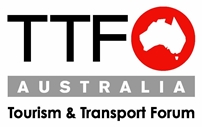
Queensland’s proposed bed tax, the national aviation network and Trans-Tasman tourism
When the Federal Government announced its plan last year to introduce a tax on working holidaymakers (a.k.a. the “backpackers tax”), the tourism industry found its voice. The campaign which followed resulted in a lower rate for the backpackers tax, and a subsequent five year freeze on the Passenger Movement Charge (the “holiday tax”). It also galvanised the tourism sector, and sent a clear message from the industry: “Get your hands out of our pockets”.
As many of our Queensland-based members would know, the Queensland Tourism Industry Council (QTIC) has been looking for support for a 5 per cent ‘bed-tax’ on commercial room rates. Needless to say, we think this is a bad idea that will hurt the Queensland visitor economy and add to the cost of business travel. While we support increased funding for tourism marketing, another tax is the wrong way to go about it.
Tourism is critical to Queensland, contributing $11.2 billion each year to the economy and directly employing 135,000 people. Any new tax which impacts the State’s tourism sector will reduce its domestic and international competitiveness and cause tourists to look elsewhere for a holiday destination – particularly as no other Australian jurisdiction is pursuing a similar tax.
We know that a 5 per cent bed-tax would increase the average room-rate in Queensland from $156 to $164 per night. While this rise would hurt the accommodation sector, it would also have a flow-on effect across the whole visitor economy and threaten local jobs.
I am happy to see that the State’s Tourism Minister Kate Jones and Opposition Leader Tim Nicholls have both publicly ruled out implementing a bed-tax or additional charges on the tourism sector. I am thrilled to see such a bipartisan approach to this important issue.
Another key and intensifying issue right now for the industry is the efficiency of our national aviation network. We were delighted last week to see the latest international visitor arrival figures up by 11 per cent, continued proof that our global tourism campaigns are hitting the mark. But can we continue to handle the huge volumes of passengers flowing through our airports? Certainly not without some specific reforms.
At Sydney Airport, our largest international gateway, artificial restrictions on aircraft movements are choking the airport during peak operating hours and preventing airlines from effectively responding to serious delays such as the recent storms which have hit the city day after day. The result is not just a Sydney problem – it’s a national problem, as knock-on delays disrupt air services in many other places.
There’s also growing congestion in peak periods within many of our international air terminals, as soaring visitor numbers swell queues in arrival halls. The Federal Government, to its credit, is expediting the introduction of next-generation border processing technology to help speed the movement of passengers through terminals, and just last week the technology company SITA announced a trial of facial recognition technology in partnership with Brisbane Airport and Air New Zealand.
That’s great, but begs another question. Why, in 2017, do travellers between Australia and New Zealand still need to queue in international airports before and after flights which can be as short as three hours? We can and should deliver a more streamlined, domestic-like experience. The technology already exists for immigration pre-clearance, through which travellers undergo all security, immigration and quarantine screening at their point of departure, requiring no formalities at the destination airport, and significantly easing pressure in immigration halls.
It’s time to introduce pre-clearance in Australia for selected, trusted markets, and there’s nowhere better to start than Trans-Tasman air routes. All that’s needed now is for the Australian and New Zealand Governments to make it happen in both directions.
